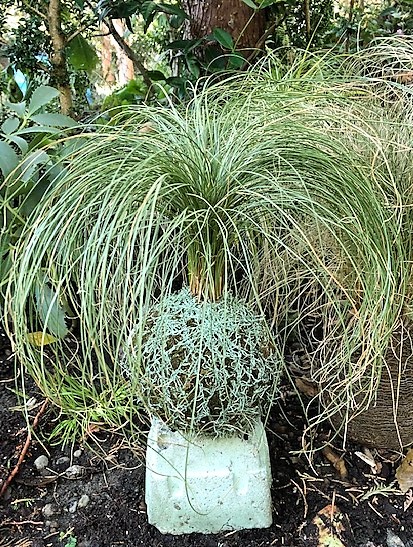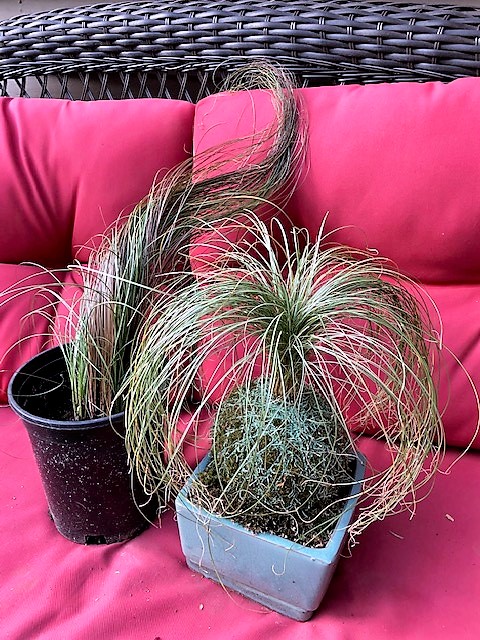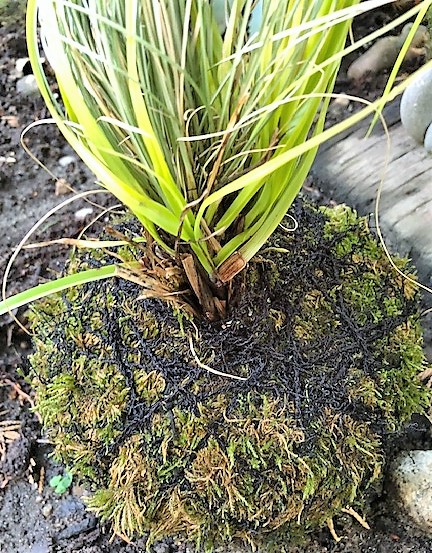
Imagine walking into a leafy greenhouse. There you find a group of plants, suspended in space, each growing out of a rounded ball of moss, and dancing lightly in the breeze—an utterly exquisite show. You’re looking at kokedama, an elegant Japanese bonsai technique for showing off superstar plants.
Several years ago, Chance Justbe, a Pacific Northwest garden coach and creator of custom craft projects for nurseries, was entranced by a photograph of a room filled with kokedama—which translates as moss ball. He wanted more information. At that time, not much was available on the traditional Japanese method, so he researched, improvised, and came up with his process. “It has to survive for a year at least,” he says, “if I’m going to teach a technique.”

Now, there are many kokedama teaching videos on the internet, but here’s Chance’s Northwest spin on the ancient art.
Mix together in a ratio of one-part clay to two-parts each bagged potting soil and coir. Add enough water to form a ball. Clay keeps the balls from drying out too quickly and Chance gathers it from his own yard. You can also buy it at a craft store. He adds a slow-release bonsai fertilizer, per package instructions.
Remove your plants from their containers, and knock off extraneous soil. Open ball in the middle, insert the roots, and smooth ball back together. Chance likes the airy look of grasses, like finely textured sedges (Carex) and grass-like plants, such as liriopes. He mixes colors, putting together small plugs—for instance, Carex flacca ‘Blue Zinger’ with the golden C. oshimensis ‘Everillo’.
Wrap ball with nylon stocking material, pulling it gently up to the opening for the plants. “Obviously, the Japanese don’t use panty hose,” says Chance. But he finds the balls are sturdier. “Once I had little slugs eat the moss,” he says, “but the nylon stocking stopped them from going further.” He buys black knee-highs from dollar stores, but also encourages recycling.

Cover with moss, tucking it in close to the plants. In the rainy Pacific Northwest, Chance prefers living mosses, gathered from house roofs, gutters, and backyards. “I like using stuff people don’t want,” Chance says. “It’s something for nothing—and that makes it valuable.” In less mossy parts of the country, you could cover with water-soaked sheets of peat moss. “Just don’t expect them to be alive,” he notes.
Tie up with scrubby yarn, starting at the plant opening. Make a knot. Go around the ball in a pattern that holds the moss evenly. Return to the top and form a loop for hanging. Chance likes black acrylic yarn, used to crochet scrub cloths, and found at craft stores. Other materials can also be used, “But not fishing line,” he says. “It’s not fun to work with.”
To maintain, immerse your kokedama in a bucket of water once or twice a week, preferably in rain water. “House water tends to kill moss,” Chance says. Or, to dissipate chemicals in tap water, allow your bucket to sit for 48 hours before dunking kokedama. You can judge water needs by weight, as well as the look of the foliage.
Enjoy the process. Chance recommends creating one kokedama for learning, and the next for beauty. He says, “You have to make them twice, because you’ll learn so much the first time.”


